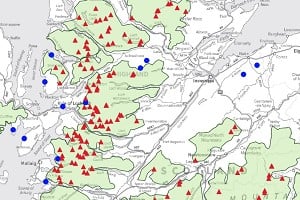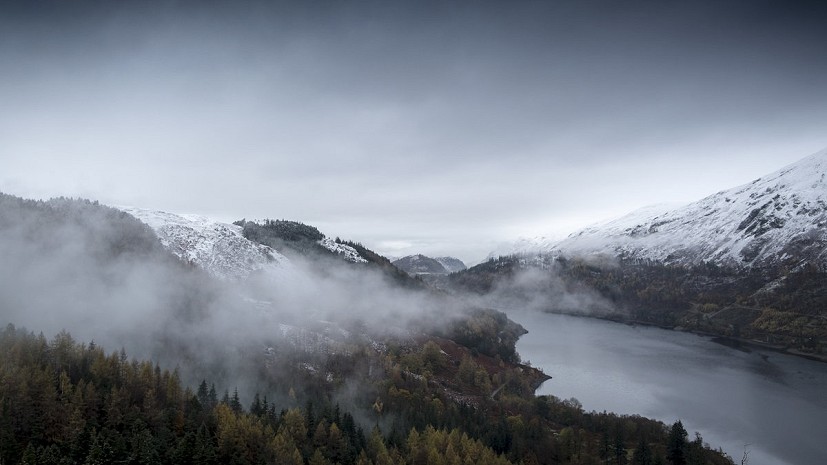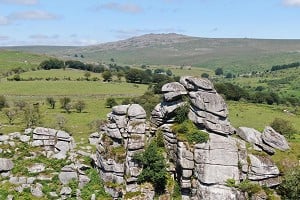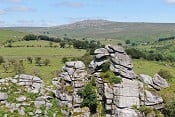
A proposal to build a major zip wire attraction over Thirlmere, in the heart of the Lake District, is proving controversial. Objectors say that the tourist development would be at odds with the area's National Park status, spoil the view and increase both noise and traffic in the valley. Conservation charity Friends of the Lake District have been vocal in the campaign that's mounting against the Thirlmere Activity Hub, and here they explain why.
A major development has been proposed in the stunning and tranquil valley of Thirlmere in the Lake District. A planning application submitted by TreeTop Trek would put eight zipwires, each over 1km long, across the width of Thirlmere, effectively dissecting the lake. This is a test case that will determine whether the Lake District National Park Authority (LDNPA) is in the business of protecting our nationally important landscapes, or warming to the idea of commercial tourist development in beautiful open countryside where it does not currently exist.
The 'Thirlmere Activity Hub' proposal has raised the issue of major development within our national parks and asks questions about the use and the future of these designated landscapes.
A National Park's protection is based on the planning laws and guidelines that it is required to abide by. National Park and World Heritage Site Status (as received by the Lake District this year) both bring a responsibility to adhere to a set of values to protect the special landscapes in these areas.
We believe TreeTop Trek's application disregards planning law and policies which are in place to afford our National Park the highest levels of protection from development. The decision of the National Park's Development Control Committee on whether to recommend refusal of this planning application is guided by these policies - so why is there a sense of unease amongst those opposed to this application?
"The outcome of this application could have major consequences for all our National Parks"
It is perhaps because the outcome of this application could have major consequences for the future of all our National Parks. Many view this application as a potential Trojan horse, both for further development at Thirlmere and as a green light for large-scale commercial development in National Parks across the country.
In our written response to the Lake District National Park Authority, Friends of the Lake District have been forthright in our opposition to the application.
Laura Fiske, our Planning Officer, says:
"Friends of the Lake District is convinced that there is no justification for this development in this sensitive location and it should be refused. The country's most spectacular places must remain free and open for all to appreciate and enjoy. National Parks must be managed for the interests of the many and not the few."
"The size and scale of this application at 39 hectares (equivalent to 28 football pitches) means that the National Park Planning Authority must treat this as a 'Major Development' and adhere to national and its own local policy introduced to protect the Park's most valuable assets including the Thirlmere Valley from large-scale commercial developments."
This Policy states that:
Major Development should only take place within a national park if there are exceptional circumstances including:
- no alternative sites for the development outside of a national park,
- there is a proven national need that can't be met in any other way and,
- the development is in the public interest
We think the wording is unambiguous, and that this application satisfies none of these requirements - and on this point alone we would expect a decision to refuse this application to be made.
In addition this application is contrary to multiple other policies. For example the development creates conflict between the National Park's purposes to conserve and enhance its natural beauty, and policy relating to development in the open countryside which states that an application must demonstrate:
- an essential need for a rural location,
- or that it will help to sustain an existing business, including farm diversification schemes,
- or that it provides for a proven and essential housing need,
- or an appropriate reuse, redevelopment or extension of an existing building.
In our view, again, it demonstrates none of these.

The LDNPA Core Strategy states that:
'We want to protect the distinctive character of the North, and conserve the integrity of the diverse patchwork of habitats, historic landscape, and character of the vernacular built environment. We want to protect visual amenity, including the skyline and views in to and out of the area.'
"If the application was permitted, it would make one wonder whether National Park, and indeed World Heritage Site status and the laws and policy which support the designations actually mean anything anymore"
This is surely an opportunity for the Park Authority to stand by its own policies and guidelines and to refuse this application in order to protect the landscape of the Thirlmere Valley.
The development also threatens to swell visitor numbers to a remote valley with little regard for another planning policy specifically designed to protect areas adjacent to Thirlmere which states that:
'We will support initiatives that reduce non-essential travel, especially car based visitors, over Dunmail Raise between North and Central/South East areas.'
"The application cites an estimated increase of 79,000 visitors in year one, increasing to an additional 127,000 visitors in year two" says Laura Fiske.
"The Transport assessment submitted with the planning application suggests that some 92% of visitors would arrive by car."
"We are demanding that the principles and policies introduced by Parliament to protect all of our National Parks from damaging development must be upheld."
Our arguments suggest that the decision of the Lake District National Park Development Control Committee to refuse this application should be a foregone conclusion. And yet, despite the numbers objecting, public comment, vehement opposition from organisations such as the Campaign for National Parks, British Mountaineering Council and the Open Spaces Society, there is a sense of anxiety about the Park Authority's motivation and appetite to see off this damaging large scale development.
The fear is that if the application is approved the Lake District National Park Authority will tear up its planning policy, undermine its status as a World Heritage Site and the laws that govern not just the Lake District but all of our national parks.
We hope that this is a moment that the Lake District National Park will make a decision that draws a line in the sand to say that major development is not appropriate in open countryside in a National Park. If the application was permitted, it would make one wonder whether National Park, and indeed World Heritage Site status and the laws and policy which support the designations actually mean anything anymore.
- The full planning application is available to view online using the Lake District National Park's planning application search tool using planning reference: 7/2017/2298
- Comments on this application can be submitted by email to thirlmereactivity@lakedistrict.gov.uk or by post to Lake District National Park Authority, Murley Moss, Kendal, LA9 7RL
- Friends of the Lake District's full written response is available via their website at: www.friendsofthelakedistrict.org.uk
- The closing date for submitting comments to the planning authority is 12th January 2018
- Opinion: Say No To Pylons In The Lake District 24 Sep, 2015











Comments